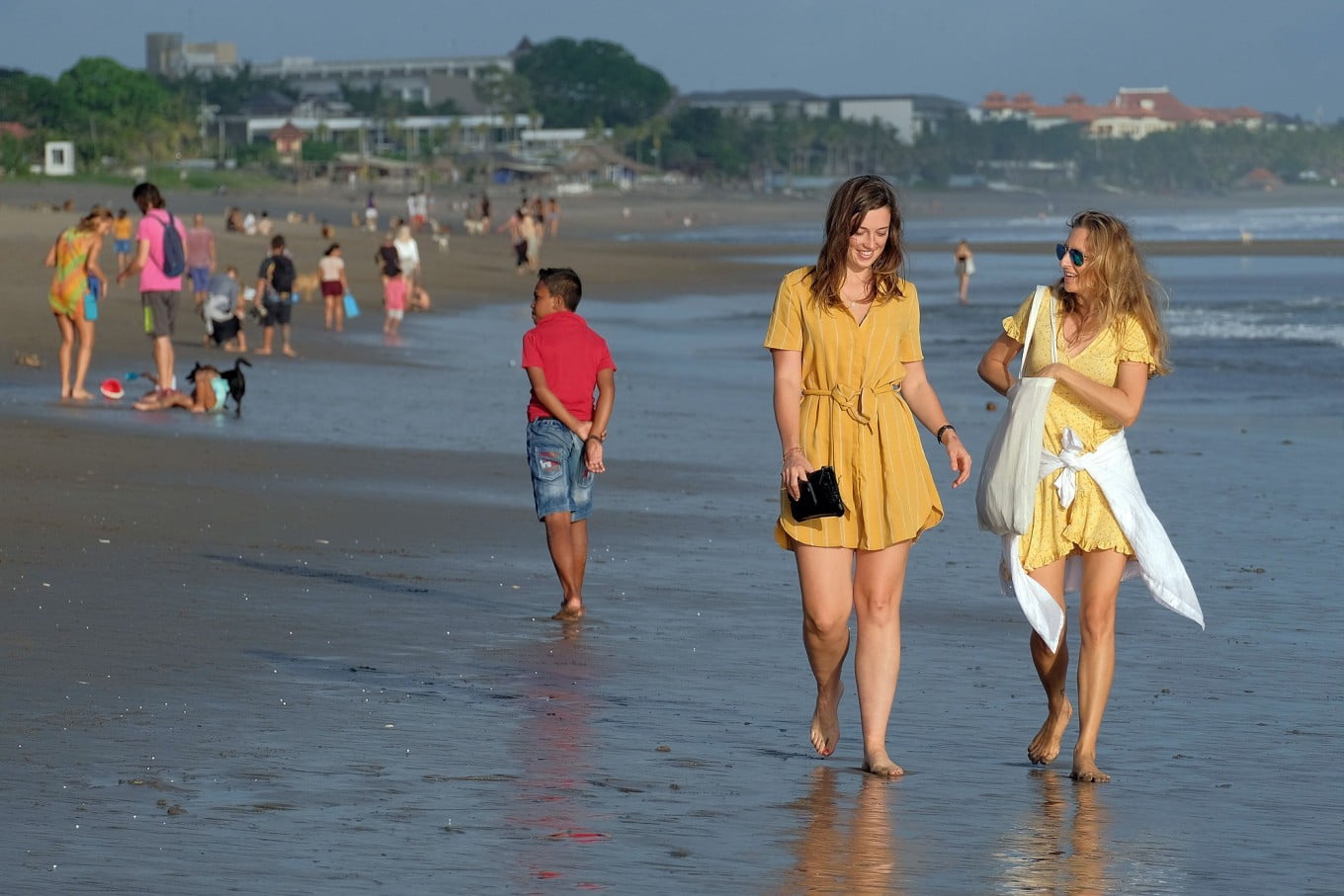Tourists walk along Berawa Beach in Badung, Bali, on June 19, 2020.(Antara/Nyoman Hendra Wibowo)
Dzulfiqar Fathur Rahman (The Jakarta Post)
Jakarta ● Tue, January 18, 2022
Bali’s tourist sector has been relying on domestic travelers since the government closed the borders at the onset of the COVID-19 pandemic, but this approach has not been enough to support the industry, especially accommodation businesses.
Thank you for reading this post, don't forget to subscribe!The number of trips to Bali by domestic travelers rose by 19.81 percent to 8.61 million in 2020, Statistics Indonesia (BPS) data show. Over the same period, foreign arrivals at I Gusti Ngurah Rai International Airport plunged by 83.02 percent to 1.05 million.
The increase in domestic arrivals can be attributed largely to people moving to Bali temporarily while office occupancy in Jakarta and elsewhere was reduced to stem the pandemic. The Tourism Ministry coined the Work-from-Bali initiative, and the government chose Bali for numerous events to support the island’s tourism.
Maulana Yusran, secretary-general of the Indonesian Hotel and Restaurant Association (PHRI), said businesses in some regions, such as Bali and Bintan in Riau Islands, could not replace foreign tourists with domestic travelers as a source of income.
“It’s okay for regions with a large contribution from domestic travelers, but not for regions with a large contribution from foreign tourists,” Maulana told The Jakarta Post in a phone interview on Jan. 12.
Bali, a popular destination for foreign tourists, has been hit hard since the pandemic forced the government to close the borders in early 2020.
Both star-rated and other hotels in the province are struggling to maintain occupancy levels as foreign guests usually account for 57 percent of the total, according to BPS data, an unusually high proportion when compared with hotels in other provinces.
For hotels in Bali, it is no longer a matter of how long they can survive the pandemic-induced slump, as many have gone under, according to Maulana.
“Many of them did not earn income fully [at the normal level], because the occupancy rate was low,” said Maulana. “It has been impossible to cover operations. This is also the case in Bintan.”
In November 2021, the occupancy rate of star-rated hotels in Bali was 20.67 percent, the lowest across the country, BPS reported. The second-lowest occupancy rate was in Riau Islands at 31.54 percent.
Maulana added that he was expecting meetings, incentives, conferencing and exhibitions (MICE) to provide the biggest push for the industry’s recovery, noting that spending by people traveling for such purposes typically was more robust.
Domestic travelers coming to Bali for MICE spent on average Rp 5.48 million (US$382.50) per trip, BPS data show, 29.4 percent higher than the average spending of those traveling for marine tourism.
In March this year, the government will host the MotoGP event in Lombok, West Nusa Tenggara, near Bali. Tourism and Creative Economy Minister Sandiaga Uno said on Jan. 10 that the event was expected to draw about 100,000 visitors from Indonesia and abroad.
Indonesia will also host the Group of 20 (G20) summit at the year-end in Bali, as well as a series of events leading up to that summit.
Nationwide, meanwhile, the number of trips made by domestic tourists declined by 28.19 percent to 518.58 million in 2020, BPS data show. This fall was not as drastic as that of foreign arrivals, which dropped 74.84 percent to 4.05 million.
Additionally, domestic travelers spent an average of Rp 1.55 million per trip in 2020, a fraction of the Rp 30.98 million spent by foreign tourists on average, according to BPS. Foreign tourists spent more largely because they stayed about eight days on average, compared with just two days for domestic travelers.
Center for Reform on Economics (CORE) Indonesia executive director Mohammad Faisal said purchasing power was the main challenge to reviving tourism with domestic travelers.
As the economy recovers, consumer prices are forecast to increase, which may put pressure on people’s ability to spend, according to Faisal. However, the government’s move to scrap the requirement for a polymerase chain reaction (PCR) test has helped ease travel costs.
“Both from the policy and from the supply-and-demand perspectives, there are many things that will lead to an increase in [prices of] various daily necessities,” Faisal told the Post in a phone interview. “If they occur at once, it will psychologically affect consumers, prompting them to hold back on spending.”



